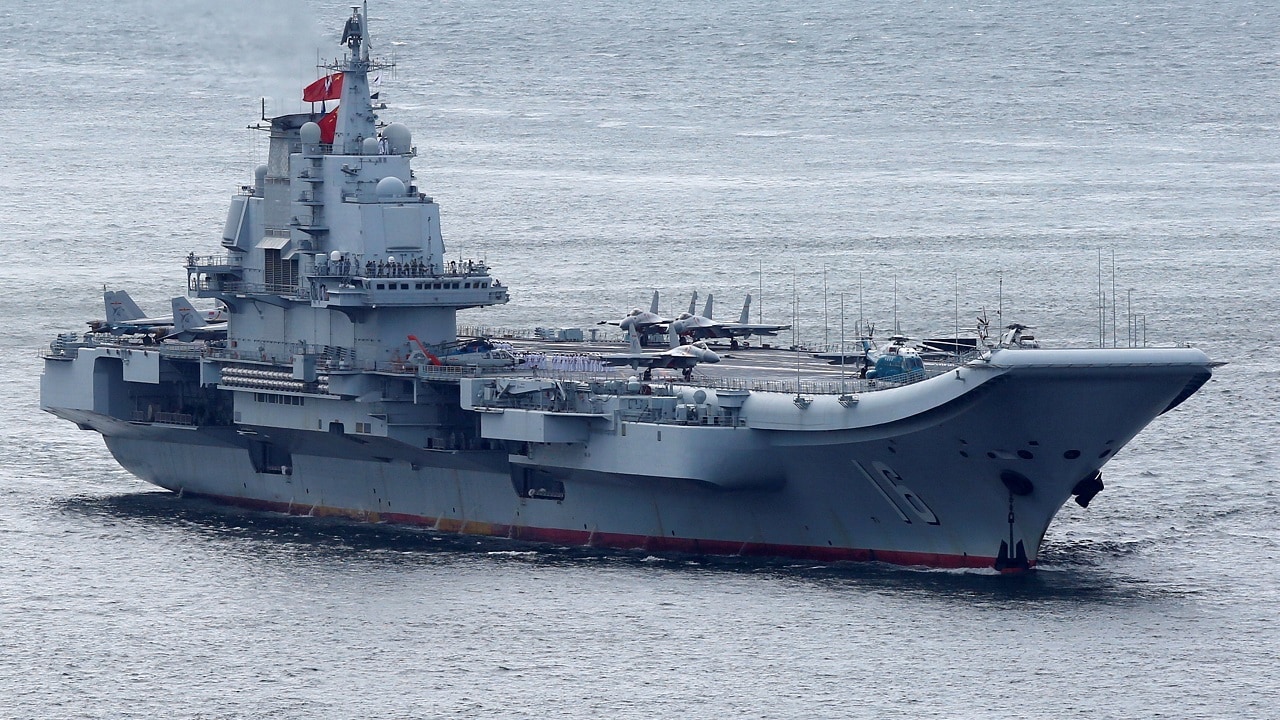Does Taiwan have a ship that could challenge China’s aircraft carriers?
Taiwan cannot pin its hopes on a large vessel. The Taiwanese answer to the above question is a fast-moving corvette, rather than a capital ship. But this ship has missiles on board that Taiwan hopes are powerful enough to fatally damage a flat-top. Meet the Ta Chiang corvette. Commissioned just last year, the Ta Chiang was built indigenously. China is not impressed with the diminutive corvette, but Taiwan will lean on it to defend its homeland from enemy vessels, and from aerial attacks as well.
A Speedy Build
The Ta Chiang patrols out of Suao naval base in Yilan County, northeast Taiwan. The Taiwanese built it in two years, and it is designed for asymmetric warfare against bigger ships.
The corvette carries 28 missiles. Most powerful among them are Hsiung Feng II and III anti-ship missiles. The Hsiung Feng is a supersonic cruise missile with a liquid-fueled ramjet engine, and it has a range of 249 miles. The Hsiung Feng sports a 496-pound warhead that can pierce the armor of a heavy ship. The Ta Chiang also deploys Sea Sword II anti-aircraft missiles. The Sea Sword was tested successfully last year. It is the ship-launched variant of the Tien Chien II air-to-air missile, meant to take out airplanes and enemy cruise missiles.
Additionally, the Ta Chiang is outfitted with an “Otobreda 76 mm naval gun, one Phalanx close-in weapon system, two 12.7mm Browning M2HB machine guns, and two Mark 32 triple torpedo launchers (one port and one starboard),” according to NavyRecognition.com.
The Ta Chiang can cruise at 43 knots with its catamaran hull, and its range is 2,000 nautical miles. The ship is only about 200 feet long and 46 feet wide, and it displaces 685 tons. Forty-one sailors are on board.
The Ta Chiang is the lead ship of the Tuo Chiang-class corvettes. Taiwan wants to have at least 11 of these fast-attack vessels by 2026.
Taiwan counts on these corvettes to deliver speed and surprise. The idea is for the ships to patrol the eastern part of the island, where China often sends frigates and destroyers to menace Taiwan. China believes the eastern part of Taiwan is sparsely defended and weak, so the Ta Chiang will have its work cut out for it. The future ships of the Tuo Chiang-class will eventually sail on the western side of the island and defend against China’s amphibious ships if Beijing tries an invasion from that sector.
But Is Ta Chiang Really a Carrier Killer?
The language coming from Taiwan is optimistic, as the Ta Chiang is being called a “carrier killer.” That is probably a boast meant for public relations purposes. The speedy corvette could, however, attack smaller escort vessels in a carrier battle group – it just doesn’t have enough anti-ship missiles to make a huge difference.
China is skeptical that the Ta Chiang can even the balance. Chinese Foreign Ministry spokesperson Zhao Lijian said during the corvette’s first launch that “the attempt of Taiwan’s separatist forces to confront the mainland militarily can lead nowhere.”
The Taiwanese are determined to build their own ships, however small, to answer the threat China poses from the sea and the air. They will need many more, however. The ships that the Taiwanese navy has procured from the United States over the years are aging, and Taiwan needs something new. Give credit to President Tsai Ing-wen for prodding the country’s shipbuilders to construct modern ships at a relatively fast pace.
Taiwan’s navy will need everything they can put in the water to defend against China.
Now serving as 1945’s Defense and National Security Editor, Brent M. Eastwood, PhD, is the author of Humans, Machines, and Data: Future Trends in Warfare. He is an Emerging Threats expert and former U.S. Army Infantry officer. You can follow him on Twitter @BMEastwood.

